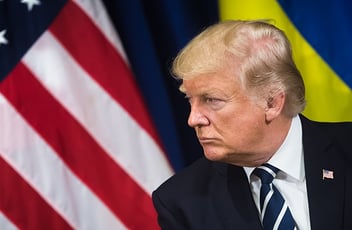
Supreme Court Justice Anthony Kennedy officially retired on July 31, leaving behind an opening on America’s highest court. His retirement puts the second opening on the bench in almost as many years, and (particularly with the nomination of Brett Kavanaugh) will likely result in a much more conservative Supreme Court.
You've likely been hearing a lot in the news about the recent nomination and might even have some strong opinions on the matter. Lesser known, however, are the various stages of the confirmation process itself. For example - did you know there’s a prehearing stage? Here’s a quick breakdown of the process - from nomination through confirmation:
- First, the president compiles a list of potential nominees, often narrowing it down to a select few.
- Then the president officially announces the nominee.
- That nominee is then referred to the United States Senate for a hearing by the Senate Judiciary Committee. The wait between nomination and hearing (the prehearing stage) varies dramatically from nominee to nominee.
- During the prehearing stage, the ABA’s Standing Committee on the Federal Judiciary (which is “publicly committed to providing an impartial evaluation” of the qualifications of each nominee) reviews the nominee, ultimately rating a nominee “well qualified,” “qualified,” or “not qualified.”
- The Senate Judiciary Committee then holds a hearing in which the nominee answers the Committee’s questions. The hearing can take several days and touches upon a variety of topics (for example, here’s the written questionnaire).
- After the hearing, the Senate Judiciary Committee confers and will then put the nominee to the floor of the Senate for a full vote. They can give a positive recommendation, an unfavorable one, or none at all (here’s looking at you, Clarence Thomas)!
- Typically, there is also a document review, where Senators can request the records (such as White House records) of the nominee. This process can take several months.
- And finally, the Senate will vote on whether to confirm the nominee. The number of votes required is 51 (this is a recent change). A president may withdraw a nominee, which is generally done if it looks like the nominee will be rejected by the Senate. Otherwise, the nominee is either confirmed by the Senate and eventually sworn in, or rejected, and the process begins again.
For details on specific SCOTUS cases, you can check out our annual SCOTUS Week this November, as well as several other SCOTUS programs available now.
.png)


%20(1).png?width=352&name=bigstock-United-States-Passport-Social-263588914%20(1)%20(1).png)